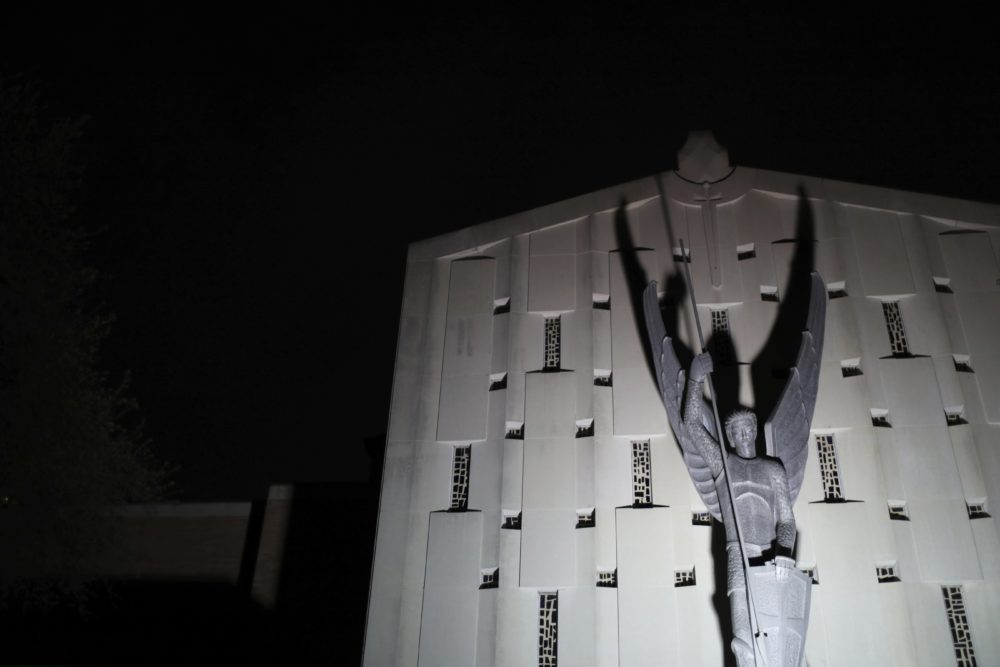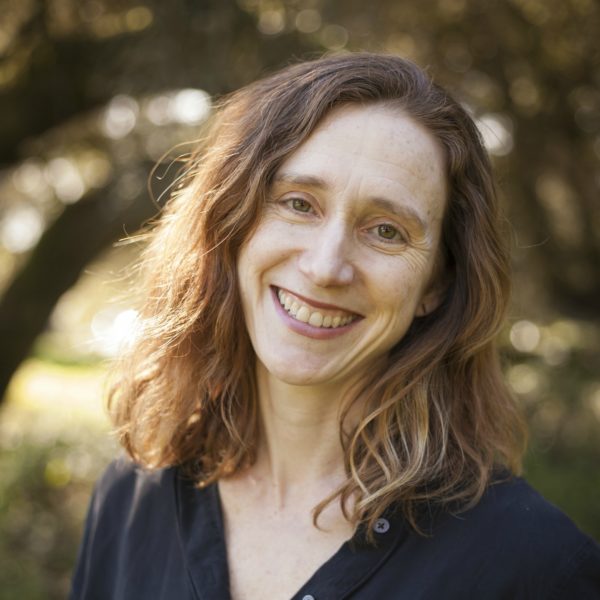Advertisement
Commentary
The Catholic Church I Imagined Never Existed

When I was a child in the 1970s my mother wore her hair to her waist and rarely went to church. We lived in the Dorchester neighborhood of Boston, where I sometimes ventured into the homes of the Irish Catholic kids on my block. Those homes seem, in memory, to have been all wood-paneled rooms, darkened with thick curtains and decorated with gory crucifixes. I’d stare, transfixed, at that frail and bleeding body. It seemed a million miles from my own family’s Catholicism, which, when it did appear, came mostly clad in the sunny tones of Sister Corita Kent prints and folk songs sung to a guitar.
Only later would I understand how fraught my mother’s absence from church was; she’d gone to Catholic schools up until college, and every few years she considered sending me to one, too. In the hallways of those schools we visited, I saw her whole demeanor change — her “Yes, Father” or “Yes, Sister” delivered with head bent and eyes downcast. What, I wondered, could exert that hold on a person? I sensed the presence of some alluring secret whose mystery I couldn’t quite reach.
By middle school my family had moved to the suburbs, and each day I walked home through a small patch of woods by a creek. I’d sit on a fallen tree and imagine it was the late 1800s, Prince Edward Island, “Anne of Green Gables.” Like Anne, I was mystico-religious. I adored the hidden flowers and the snow-draped trees. I wrote romantic poems about nature and God. I imagined fairies into the hollows of the creek.
I sensed the presence of some alluring secret whose mystery I couldn’t quite reach.
When my mother told me I would attend CCD, an acronym for the Catholic education that other kids said meant “Central City Dump,” the classes held out a promise: I would learn about God and be inducted into the mystery that had always hovered around church. Instead, though, the nuns handed us worksheets on the sacraments, told us to stay in our seats, then ignored the chaos that whirled in the room around them.
One wintry Thursday evening, I arrived late, only to face the blank doors of the building, so I turned around. Skipping CCD seemed to me a completely original idea. I didn’t think to hide but, moments later, a car pulled up, and the priest who’d greeted us in the gym on the first night of class got out. He’d opened his remarks by shouting: if we were late, we’d be in trouble; if we were loud, we’d be in trouble; if we cut class, we’d be in trouble. Then he came straight for me.
“What are you doing out here?” He grabbed me by the arm and pulled me upstairs to his office. I must have floated my God-is-a-flower philosophy to this man, because he got angrier.
“I have a Ph.D. in theology,” he yelled across the desk. “Don’t think you know better than me!”
He called my parents. At home I sobbed, blindly furious, and told them I wasn’t going back. And I didn’t. That was the end of the mystery for me; the end of thinking that I might be drawn toward some secret sunlit place that lay encased within the fortress of the church.
Once, several years ago, when I lived in Los Angeles, I stopped to eat at a bar in Silver Lake and quickly found myself drawn into conversation with the man next to me. He was writing a comic book that the bartender was illustrating. The story was autobiographical, he said. He’d grown up in the neighborhood, an Italian-Catholic boy in the 1960s, and he’d attended a church nearby. At 10 or 11 he’d become an altar boy, at which point he had been repeatedly raped by a priest. He’d been among the group of plaintiffs to receive the largest settlement to date from the Catholic church. The case, in which 508 people sued the archdiocese of Los Angeles, was settled in July of 2007 for $660 million.
“I’m a millionaire,” he told me. He said his comic book he would reveal the truth about the forces that had harmed him. I could see that he was brave, but drunk too — a person condemned to tell his terrible story over and over again, every night, to whoever happened to sit nearby.
When Carroll describes the state of one-time Catholics like me as exile, I can’t help but think that it is, finally, exile from an imagined place.
In his June cover story for The Atlantic, Catholic writer and onetime priest, James Carroll, called for the church to abolish the priesthood. This, he says, will allow lapsed Catholics like me — maybe even like that man in the bar — to return and remake the church in a more loving image. Carroll’s ideas, so generously formed and so thoughtfully evoked, almost convince me that his vision might be possible. There is still some part of me, after all, that feels drawn to that dream of a sunlit field, the wide open arms of a loving church, to Sister Corita’s joyful splashes of color.
I’ve asked my mother why anyone remains a part of the church, with all that we now know?
“Because we are Catholic,” she’s said. “It’s in us. We were born to it.”
Maybe she’s right that the church is somehow in me, in spite of my long withdrawal from it. But when Carroll describes the state of one-time Catholics like me as exile, I can’t help but think that it is, finally, exile from an imagined place.
